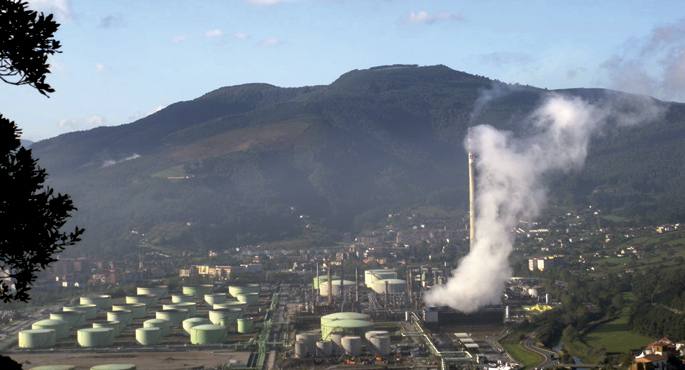
- The annual values of small particles are above the levels recommended by the World Health Organization in almost the entire Southern Basque Country. The majority of the population breathes polluted air, according to the 2011 air quality report published by Ekologistak Martxan.

Anyone who has tried to kill someone by poisoning knows that the most appropriate method of committing the perfect crime is to administer constant small doses to the victim. Although it may be more painful to commit the murder by fascicles, the advantages in hiding the evidence are considerable. Something similar happens with air pollution: if there is a massive emission of toxic substances, it becomes news; if poison is slowly emitted, the murderers can work silently and happily in our air.
Ecologists in Action published last week a report on air quality in the Spanish state of 2011 and according to the data it offers on Hego Euskal Herria, most of the population breathes polluting substances above the levels recommended by the World Health Organization (WHO).
Regarding the composition of toxic particles, high levels of PM10 and PM2.5 have been measured in many areas of Hego Euskal Herria. This is a classification by size: PM10 particles are less than 10 micrometers and can reach the finest tubes in the respiratory system. PM2.5, on the other hand, is less than 2.5 microns and can reach the blood because of its small size from the respiratory system.
How does inhalation of these particles affect health? We salute the three gentlemen of death: lung cancer, cardiovascular diseases and respiratory diseases. The smaller, the more harmful, the favorite victims of PM2.5 are children, the older and people with lung problems.
In almost all regions of CAPV there are particles type PM10 and PM2.5 above the levels recommended by WHO, except in Llanada Alavesa, Encartación and Valle del Nervión. Bilbao is the blackest point for industrial activity and intense traffic. As far as the Foral Community of Navarre is concerned, the Region of Pamplona and Tudela are located as areas with the most polluted air.
In addition to microparticles, we also breathe sulphur dioxide and tropospheric ozone at levels worthy of mention. Sulphur dioxide mainly affects Arrasate and surrounding villages, Muskiz, Santurtzi and Abanto, as well as Pamplona, due to emissions from the industrial site of Landaben. Tropospheric ozone is manifested on the coast, in the Goierri, in the upper Deba, in Ibaizabal, in Sangüesa, in Tudela and in the Ribera de Álava.
Spanish Secretary of State for the Environment, Federico Ramos, said the day after the light of the reports by Ekologistak Martxan that we should not be “alarmist” when talking about air quality. In all murders, a police officer must appear, telling people to watch the Tartar drawing of the corpse: “Nothing happens here.”